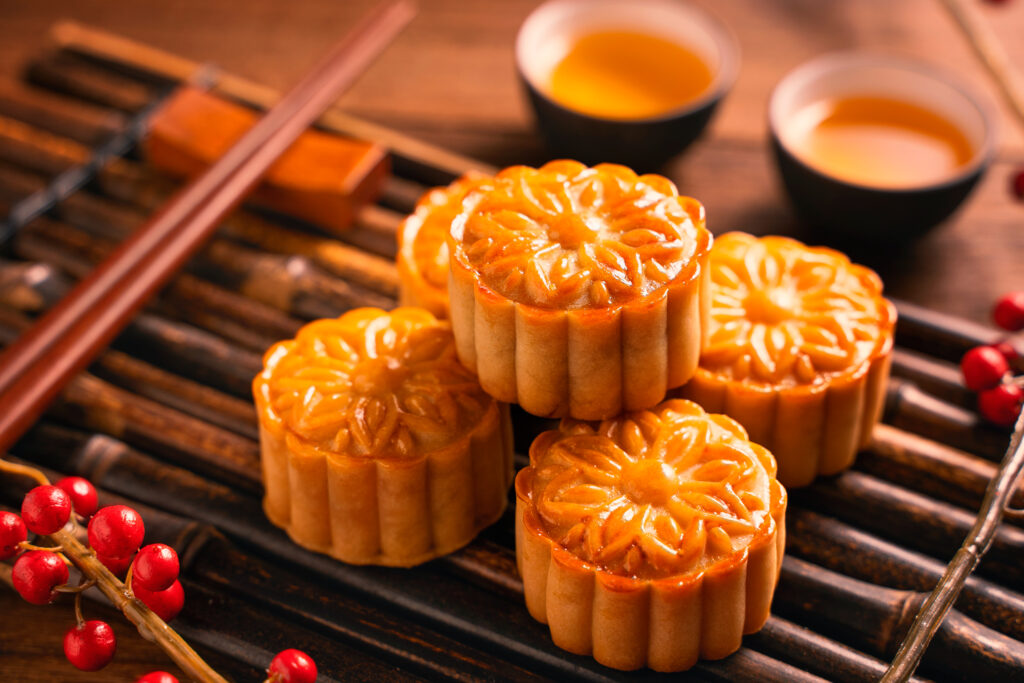

This pill was only to be taken after a year of meditation and fasting, so Hou-Yi hid it away, to be taken the following year. Hou-Yi was richly rewarded, and was given a Pill of Immortality by the Goddess of Heaven so that he might continue to protect the Emperor and the Earth forever more.

Such was the skill and might of our hero, that he drew his bow back and from it flew nine arrows striking nine suns, leaving only one. Hou-Yi climbed up the Kun Lun mountain under the blazing heat, and raised his bow to the skies. Seeing the damage being caused to the Earth, the Emperor sent for his most skilled archer, Hou-Yi, and ordered for nine of the ten suns to be shot out of the sky. One day, all ten suns appeared in the heavens, scorching the Earth and drying up the water in the wells, rice paddies and lakes. Sometimes, maybe it’s what seems the haziest and distant that connects the most deeply with our human spirit.The Mid-Autumn festival (often called Mooncake Day) is a time of year when parents tell their children the wonderous tale of the beautiful Lady on the Moon, Chang’E.Ī long, long time ago, during the Hsia dynasty around 2000BC, the Earth was circled by 10 suns, each taking its turn to shine down on the world. Which festival-fantasy is your favorite? To me, it’s just amazing to think how the moon has inspired such captivating stories, and how they are such an integral part of Chinese culture. But this magical tree restored itself every time! In this eternal struggle of fate and denied atonement, Wu Kang is forever chopping down something that grows back straight away: the most devastating lesson of patience. The gods became angry with his impatience and sentenced him to a grueling task: he must chop down the cassia tree on the moon before he goes back to earth. When you look at the shadows on the moon, can you spot Wu Kang cutting down the cassia tree? As the myth goes, Wu Kang hungered for the elixir of immortality. When combining 月 and 兔 together, it becomes 月兔 Moon rabbit, also known as 玉兔 (yù tù), the Jade Rabbit. For example, 一月 (yī yuè) is January, the first month.

Now crushing immortal medicine for those in heaven, the jade rabbit lives with Chang-E at the Moon Palace. The men were so startled by the rabbit’s selflessness that they sent it to the moon to become an immortal jade rabbit. The rabbit said to them, “You can eat me,” and jumped into the fire. The fox and monkey gave food to the beggars, but the rabbit didn’t have anything to give. So, the next time you look through your telescope, see if you can spot Chang-E sitting on the moon, gazing down on the quiet earth!Īs one legend goes, once upon a time, three immortals reincarnated as poor old men, begging for food from a fox, monkey and rabbit. To this day, there is an open-air altar where you can put your fruits and cakes, and pay homage to this tale. And so the begun the festival, with young Chinese girls praying to Chang-E. Missing his beloved one, Houyi collected Chang-E’s favourite fruits and cakes, as a sacrifice to her. Flying up to the summit of heaven on the fifteenth day of the eighth moon, she decided to reside on the moon. However, Fengmeng (逢蒙), who was jealous of Houyi’s archery, broke into his house whilst he was away, demanding Chang-E for the magical potion. In reward, he was given the elixir of immortality, but he kept it at home, because he couldn’t bear living without his wife, Chang-E (嫦娥): the beautiful goddess of the Moon. Houyi (后翌), a brave archer, took down nine of them. In Chinese mythology, one legend has it that ten suns used to circle over the earth, and one day, all ten appeared together, setting the earth ablaze with their heat. Thanking the skies for the end of the autumn harvest, the Mid-Autumn Festival has heart-warming myths behind it.


 0 kommentar(er)
0 kommentar(er)
